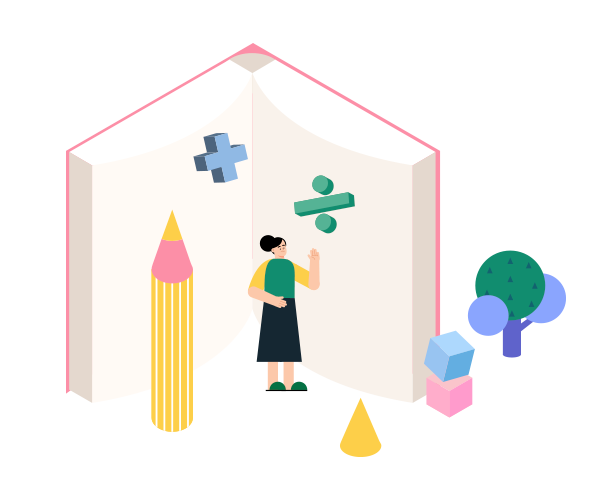Creativity: The Ability to Predict and Survive
Education is not merely about teaching, but also about drawing out. The etymology of the word "education" reflects this idea, signifying "to draw out" or "to nurture." Every child is born with a unique talent that enables them to navigate their own lives. If we were to assign a name to these talents, we could call it the “seed of creativity.”
Education is not merely about teaching, but also about drawing out. The etymology of the word "education" reflects this idea, signifying "to draw out" or "to nurture." Every child is born with a unique talent that enables them to navigate their own lives. If we were to assign a name to these talents, we could call it the “seed of creativity.”
Then, what is creativity? Creativity is the ability to perceive what is not visible, to hear what is not audible, and to understand something as if one has experienced it firsthand, even without having seen it. In essence, creativity is the ability to predict and the ability to survive. What is the best way to ensure that the seeds of creativity, inherent in every child as a unique talent, thrive and fully bear fruit? An ideal mathematics education is the solution, and the specific implementation methods are as follows.

First, we must show children many things. A child who has seen a lot can see better, even when things are not readily visible. We must let children hear many things. A child who has heard a lot can listen better, even if things seem silent. We should encourage children to visit many places. A child who has visited many places develops the ability to perceive the world as if they have already experienced it, even without having been there. In other words, a desirable mathematics education shows children many things, tells them many things, and allows them to experience many things.
The subject of this education must be nature, ultimately allowing children to fully immerse themselves in nature. We need to remember that for an ideal mathematics education to be realized, a series of exercises aimed at uncovering the secrets of nature must be implemented.
The Importance of Humanistic Knowledge
In 1823, the German astronomer Heinrich Olbers said, “If the universe is infinite and the luminous stars are uniformly distributed, then the night sky should also be brightened by starlight; however, it is not.” This is the Olbers' Paradox. Ironically, the key to solving Olbers' Paradox was provided not by a scientist but by the American poet Edgar Allan Poe.
In 1823, the German astronomer Heinrich Olbers said, “If the universe is infinite and the luminous stars are uniformly distributed, then the night sky should also be brightened by starlight; however, it is not.” This is the Olbers' Paradox. Ironically, the key to solving Olbers' Paradox was provided not by a scientist but by the American poet Edgar Allan Poe.
It is impossible to experience past eras or societies directly. However, through reading, we can understand humanity and society, thereby cultivating our humanistic knowledge. Humanities address the themes of people's lives and deaths. Humanities examine how creatively a person lived and how nobly and beautifully they faced death. The mathematics curriculum that becomes the global standard should be structured to facilitate the understanding of nature as well as of humanity, and society. Through this approach, children can cultivate their innate talents and seeds of creativity into complete fruits.
Even at this moment, mathematics education around the world is progressing in a desirable direction, intertwined with the critical issue of national survival. Mathematics is not merely about solving problems. It is the discipline that uncovers the secrets of nature, and desirable mathematics education is a series of practices aimed at discovering these secrets. Frequent exposure to nature is essential to achieve this, emphasizing the importance of internalizing and deeply understanding nature.
Furthermore, we must possess a higher-dimensional perspective that can instantly recognize both patterns and pattern collapses at a glance. This is only possible when there is a complete understanding of humanity and society, an understanding rooted in the humanities. Unveiling the secrets of nature is fundamental to creating machines and technological devices that bring happiness to people; in other words, it is the foundation of advanced industrial technology. Mathematics is the foundation of all advanced industrial technologies. It serves as the core element that determines a nation's future and strengthens its global competitiveness.
The Role of Mathematics in the Fourth Industrial Revolution

No matter how advanced technology is, innovation cannot be achieved without communication. Today’s leading IT companies around the world think they are providing the education that children desire based on their outstanding technological capabilities. However, the children seem to think differently. They complain that they are only receiving the education that teachers want to teach. Children today appeal to their teachers, asking them to consider their opinions when creating assessment questions.
This scenario vividly illustrates the lack of communication between teachers and their students. Teachers around the world tend to equate teaching with education. Because children are inherently curious and eager to learn, teachers believe they must excel in their instruction. “How wonderful would it be if we could make chalkboards and books smart enough to provide great help to children!” This is an issue teachers constantly think about. Smart electronic whiteboards and digital smart textbooks make teaching more convenient for teachers. Of course, there are many IT education companies that help create such intelligent educational materials and tools. However, these resources are primarily utilized based on the subjective preferences of teachers, which do not necessarily align with the desires of all students.
Books are the main material of education. For books to truly help children, effective communication must occur between children and teachers. In this context, books do not need to be particularly "smart". Books only need to serve as a channel of communication between teachers and children. For a book to truly be such a bridge, it must embody natural language, culture, the experiences of nature, and the lives and deaths of humans and society.
The industrialization process, characterized by the steam engine and mechanization that began in Britain, is referred to as the "First Industrial Revolution.” The period around 1870, marked by the use of electricity that enabled mass production, is referred to as the "Second Industrial Revolution." Following this, the “Third Industrial Revolution,” was led by information and automation systems utilizing the Internet and computers. Now, the anticipated transformation in the industry, known as the "Fourth Industrial Revolution," is expected to integrate the real and virtual worlds through robotics and artificial intelligence, enabling systems that can control objects automatically and intelligently.
The mathematics needed in the era of the Fourth Industrial Revolution looks completely different from what it is now. Memorizing formulas and solving problems can now be left to machines. The key concepts of the Fourth Industrial Revolution are "creativity" and "convergence." It is essential to integrate diverse disciplines and cultivate creative thinking to tackle complex problems that cannot be solved by a single field of knowledge or technology. Therefore, math education is also evolving to help children develop these crucial skills.

